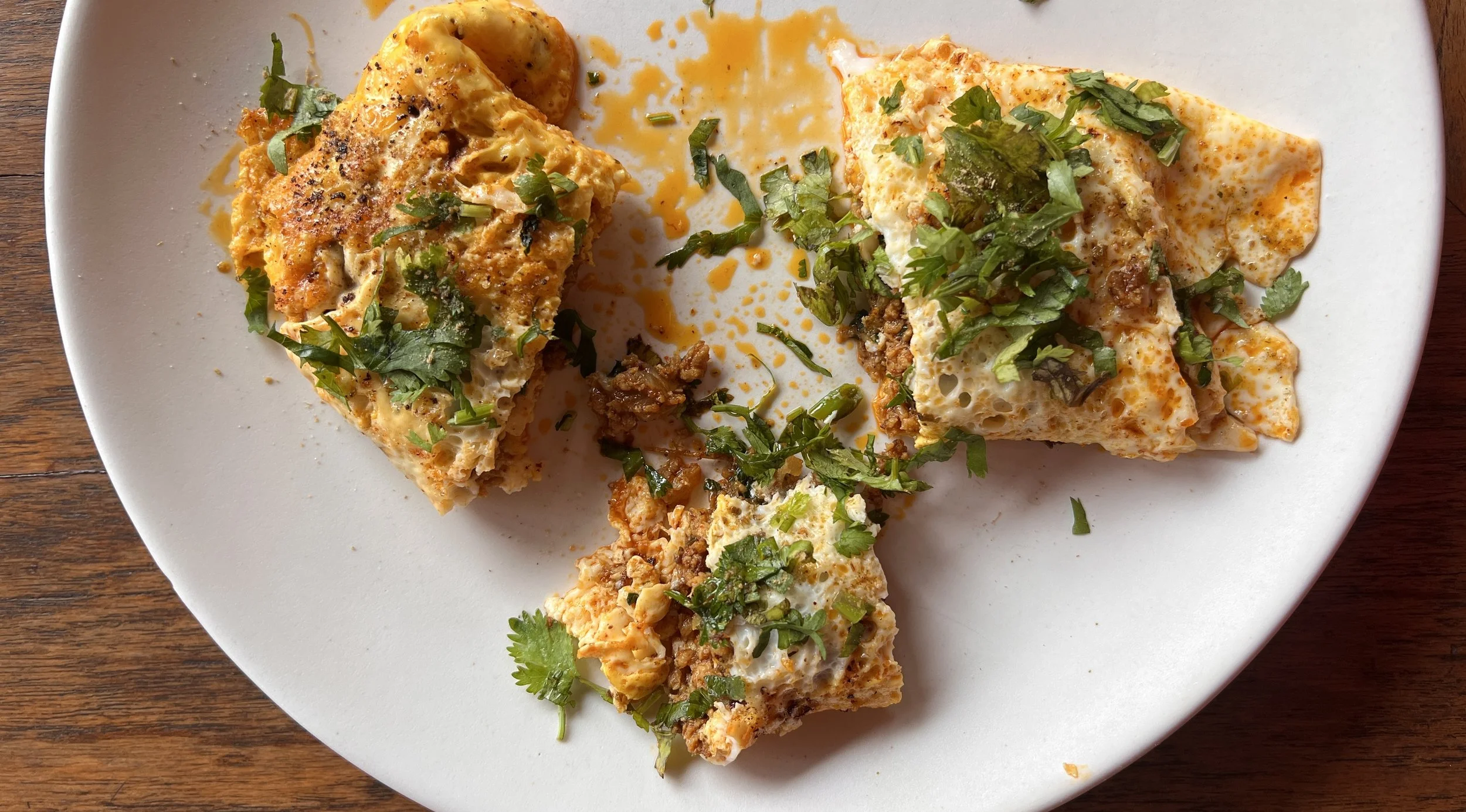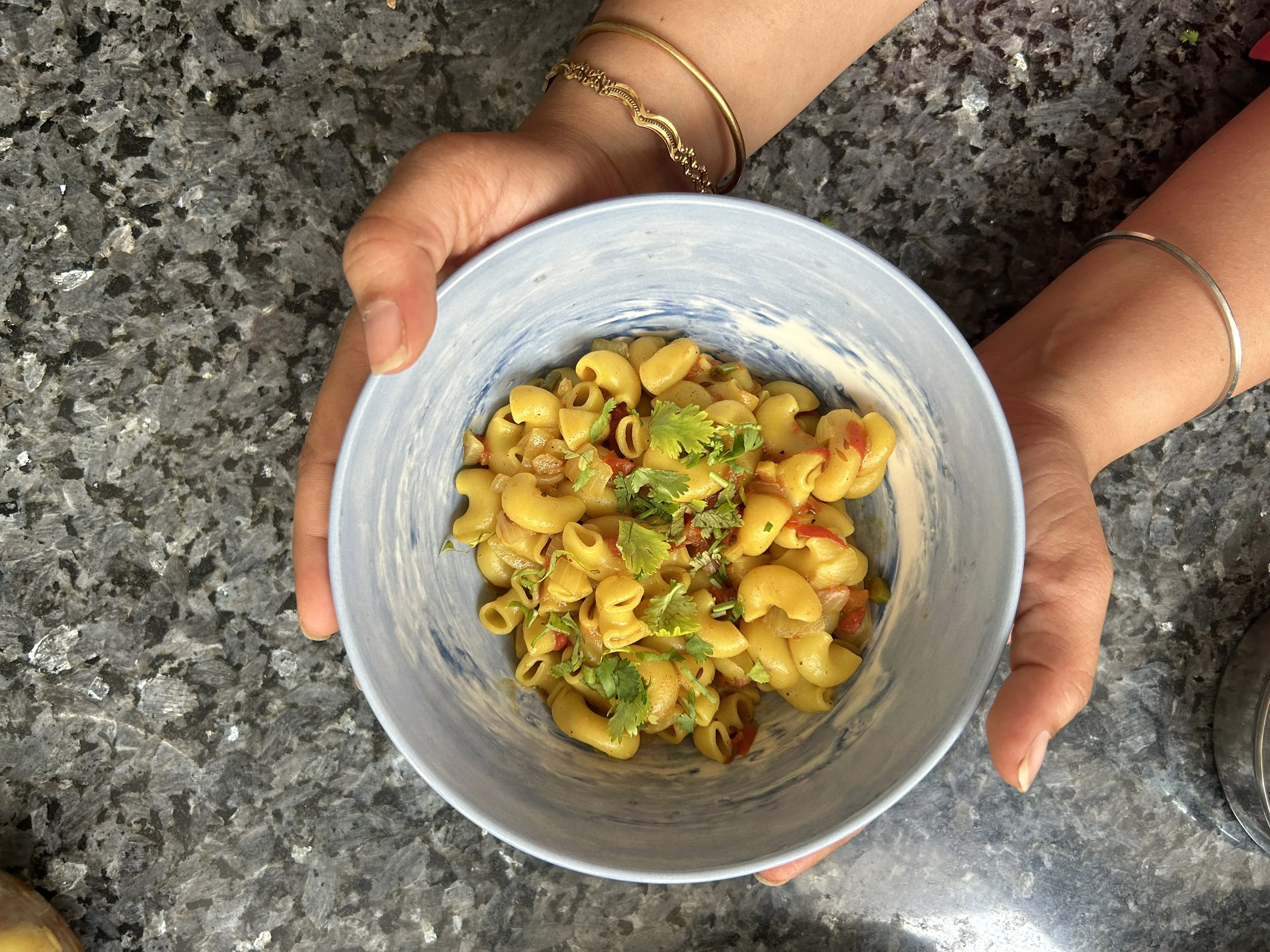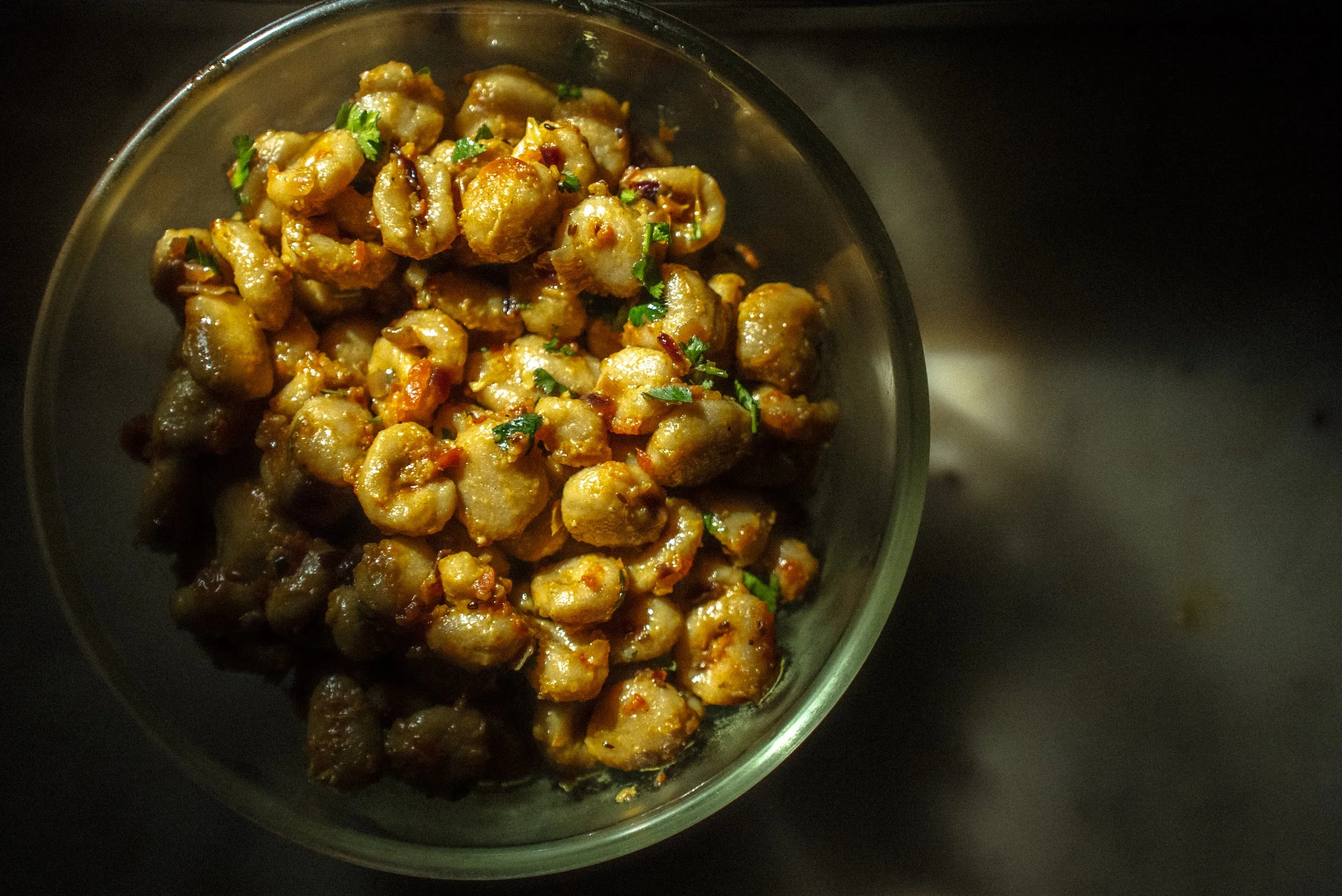What Women Can't Eat: Bengal's Widow Cuisine is a Story of Control & Defiance

In Bengal, the cuisine of the widows is not just about sustenance, but it embodies social marginalisation, the struggle for autonomy, and the quiet rebellion against centuries of restrictions. Emerging from oppressive customs, Puja Sen finds that this cuisine reflects deprivation, resilience, and an artistry born from constraint.
Rabindranath Tagore once wrote, “The life of a widow is like the burnt-out wick of a lamp, which gives neither light nor warmth. It only smolders in silence, with no one to care for its existence.” His words, penned in Chokher Bali (1903) encapsulate the silent suffering and societal neglect endured by widows in 19th-century Bengal. Yet, these traditions of deprivation stretch much further back, rooted in centuries-old patriarchal practices enshrined by caste, religion, and social norms.
For at least 800 years, Hindu widows across India — and particularly Bengal — were subjected to rigid codes of conduct. Stripped of colour, and joy, their existence was reduced to a hollow shell of piety, for the sin of ‘eating their husband’ (a metaphorical blame for his death). Central to this control was their diet, a symbolic marker of their status and an instrument of their subjugation.
Forbidden Foods
Onions and garlic, deemed rajasik in Ayurvedic principles, were forbidden to widows as they symbolized indulgence and desire. The exclusion of these ingredients was part of a broader attempt to erase a widow’s sensuality, reinforcing her asexual and ascetic image. Ingredients like masoor dal (red lentils) were forbidden for their perceived qualities of inciting passion. The widow’s plate was meant to mirror her existence: restrained, muted, and sacrificial.
These norms were most pronounced in upper-caste households, where widowhood was both a personal tragedy and a public performance of virtue. These limitations were less about health or spirituality and more about controlling the widow’s body, desires, and, by extension, property. In affluent families, dietary regulations for widows were particularly severe, as wealth and social visibility demanded they embody extreme restraint. Their strict diets became a public display of piety, reflecting the family’s adherence to dharma and protection of honour.
Changes posed a threat to the traditional transfer of family wealth. Remarriage raised fears that property might pass to new families, undermining patriarchal hegemony. While Mitakshara dominated North, West, and South India with regional variations, Bengal followed the Dayabhaga school, which differed by granting more liberal rights to widows and unmarried daughters over a husband's or father's property. As per the Dayabhaga school of Hindu Law at the time, a widow could inherit her deceased husband's property if he left no male heir. However, her inheritance was a life interest (called a "limited estate"), meaning she could use the property but could not sell, gift, or alienate it. Upon her death, the property went back to the next heir in her husband's family.
Stricter diets became a means of reinforcing widows’ purity and sacrifice, denying them an independent identity and safeguarding the established hierarchy. The stricter the controls, the more they symbolized the preservation of family wealth and status, ensuring that widows, especially younger ones, did not remarry or form relationships that could endanger the family’s property.
Conversely, widows in poorer households faced fewer prohibitions due to economic necessity, which required them to engage in labour-intensive work. Their diets were less severe, prioritising physical sustenance over symbolic austerity, reflecting a pragmatic approach shaped by their circumstances.
While Bengal’s widow cuisine is unique in its complexity and creativity, the oppression it reflects is not confined to Bengal. Across India, widows in regions like Rajasthan, Uttar Pradesh, and Tamil Nadu faced similar dietary conditions. The lived experience of Bengali widows, while deeply localized, is part of a larger national inheritance of fate and fight — one that highlights the intersection of gender, and power, through food.
Transforming Austerity into Art
Within the stark confines of their kitchens, these widows turned limitation into innovation. They exercised remarkable creativity and agency in the kitchen. In the absence of luxurious ingredients, they transformed what little they had into dishes of extraordinary flavour and depth. Their recipes often relied on everyday staples — vegetables, mustard oil, and lentils — imbued with subtle spices and careful techniques.
Their recipes often relied on everyday staples like vegetables, mustard oil, and lentils.
Take shukto, for instance. The bitter aroma of fried karela (bitter gourd) lingers in the air, softened by the nutty sweetness of ground poppy seeds. As it simmers, the dish exudes a medley of earthiness and spice, punctuated by the floral warmth of bay leaves and the whisper of ghee. To the touch, its texture is silky, punctuated by the delicate crispness of sun-dried bodi. Each spoonful is an intricate balance of bitterness and subtle sweetness, embodying the widow’s reality—harsh yet unexpectedly graceful.
Other dishes, like posto bata (a creamy poppy seed paste with mustard oil), narkel diye moong dal (moong dal with coconut), chorchori (a medley of vegetable scraps cooked with mustard oil and paanch phoron) and lau ghonto (a dry curry of bottle gourd and moong dal) carry a simplicity that belies their depth. The faint nuttiness of roasted lentils melds with the sweetness of grated coconut, while a drizzle of mustard oil leaves a sharp, peppery finish on the tongue.
Pui shak chorchori
Every dish they cooked had a meaning. Lau pata bata uses bottle gourd leaves, often discarded, ground into a paste with mustard seeds, green chilies, and a touch of mustard oil. Kumro'r bichi bata used pumpkin seeds, another item often thrown away, to make a paste. Peper dalna was a curry of papaya, a fruit considered sattvic and easily digestible and which was often used in widow kitchens. Chire'r pulao — flattened rice (chire) was a pantry staple in widow households and to make it more filling, widows combined chire with seasonal vegetables, peanuts, and sugar. Sheem Paturi — paturi, traditionally made with fish, was adapted for vegetarian kitchens by substituting it with flat beans, which are coated in mustard paste and wrapped in banana leaves before being steamed. Jhinge Posto — ridge gourd was considered a sattvic vegetable and cooked with poppy seed paste, green chilies, and mustard oil. Labra is a quintessential Bengali mixed vegetable dish, which relies on the natural sweetness and textures of seasonal vegetables like pumpkin, brinjal, radish, and spinach, flavored with mustard seeds, ginger, and a touch of jaggery. Chhanar dalna is prepared with homemade cottage cheese (chhena) to replace protein sources like meat or fish. Kochu’r shaak ghonto uses uses taro stems, a commonly available yet underutilized ingredient, which are mixed with lentils and minimal spices to create a hearty and nutrient-dense preparation.
Voices from the Past
Stories of widow cuisine are not easy to find. They linger in fading family anecdotes, rare essays like Chitrita Banerji’s What Bengali Widows Cannot Eat, and recipes passed down through generations. Banerji once remarked, “Once the practice of food deprivation was imposed on widows, it did contribute to the enrichment of Bengali vegetarian cooking.” While these women’s contributions to culinary heritage are undeniable, they remain largely invisible, their brilliance overshadowed by the suffering that birthed it.
Widow cuisine today stands at the intersection of tradition and modernity. While societal attitudes toward widows have evolved in many parts of India, allowing for greater agency and dignity, the culinary restrictions rooted in their past still echo in certain regions and communities.
In my family, widow cuisine exists as fragments of memory, both fragile and luminous. My great-grandmother and grandmother, widows for much of their life, left behind a repertoire of recipes like narkel diye moong dal and posto bata, which now find their way to our table. My mother recalls these recipes with a reverence that borders on grief — a bittersweet connection to a woman who lived much of her life in the shadows. I often wonder whether cooking was her solace or her burden.
This photo of the author’s grandparents was taken at their home in Barisal in 1946. They lived in a joint family, and their nephew had just bought a new Kodak camera—he wanted to try it out. Her great grandmother was a widow and her recipes were passed down generations of the family.
My mother and father, though from fairly liberal, educated families, still disagree about one key ingredient in shukto: the inclusion of sweet potatoes, or ‘ranga aloo’ (red potatoes) as they are called in Bengali. My mother remembers that people in her family often ate sweet potatoes, while my father assumes that this was because their families were relatively progressive in their views on widowhood. But we remain unsure if sweet potatoes were allowed in the diets of widows or if it was an exception made in the face of changing social norms. The discussion of sweet potatoes in shukto encapsulates the tension between tradition and the modern, between what was considered permissible and what was forced upon them in the name of duty.
Widow cuisine is not just food — it is a narrative of survival, artistry, systemic injustice, silent resistance, and unacknowledged brilliance. The recipes these women created, brimming with depth, challenge us to confront the legacies of caste, gender, and power that still linger in our kitchens.
This cuisine is a tribute to the women who cooked in silence and lived in shadows, leaving behind a culinary heritage that is as poignant as it is profound. Their story reminds us that even within the confines of oppression, there is space for creativity, and the enduring power of the human spirit.
Shukto, with its complex balance of bitterness, spice, and subtle sweetness, becomes a metaphor for the life of widows in Bengal—both harsh and graceful, marked by surprising elegance.
RECIPE FOR SHUKTO
Ingredients
1 bitter gourd, peeled and sliced thinly
1 raw banana, peeled and sliced
1 cup drumstick (moringa), inch-long pieces
1 medium potato, cubed
4-5 long beans, cut into inch-long pieces
1 small eggplant, cubed
1 white radish, cubed
½ raw papaya, cubed
4-5 pointed gourd, cubed
2 tsp black mustard and poppy seed paste
1⁄2 tsp paanch phoron (Bengali five-spice)
2 bay leaves
4-5 bodi (sun-dried urad dal dumplings)
1⁄2 tsp turmeric powder
1 tbsp ghee
Salt to taste
1 tsp ginger paste
2-3 cups water
1 cup milk
2 tsp rice powder
1 tbsp sugar
Mustard oil, as required
Method
Heat up mustard oil, and fry the bodi. Keep aside.
Fry the bitter gourd till it is brown and keep aside.
Heat the ghee in a pan and add the paanch phoron and bay leaves.
Once they start to crackle, add the washed vegetables (everything except the bitter gourd).
Add salt and turmeric. Keep covered and cook till water comes out of the vegetables.
Add 2 cups of water, and ginger paste.
Once this comes to a boil and the vegetables are cooked, add the mustard and poppy paste.
Once the curry dries out a bit, add rice powder and sugar to the milk and add this mixture to the curry. Boil this for 5-6 minutes. Then add the fried bitter gourd and mix well.
Serve hot, with plain rice.
Puja Sen is a culinary expert and cultural researcher with degrees from the Culinary Institute of America, and Cornell University, specializing in food culture and global cuisines.
Sources:
Banerji, Chitrita, and Imogen Jack, eds. 2006. The Hour of the Goddess: Memories of Women, Food and Ritual in Bengal. New Delhi: Seagull Books. Chapter: “What Bengali Widows Cannot Eat,” pp. 95–104.
Basu, K.K. 1962. Hindu Law and Custom in Bengal. Calcutta: Firma KLM.
Sen, Colleen Taylor. 2004. Food Culture in India. Westport, CT: Greenwood Press.
Chen, M. A. (2009). Famine, Widowhood and Paid Work: Seeking Gender Justice in South Asia. In Kaushik Basu and Ravi Kanbur (eds.). Essays in Honor of Amartya Sen Volume II: Society, Institutions, and Development (pp. 219-236). Oxford: Oxford University Press.
Chatterjee, Ananya. The Bengali Widow’s Kitchen: Looking Back at an Obscure Legacy. New Literaria: An International Journal of Interdisciplinary Studies in Humanities, vol. 4, no. 1, Jan.–Feb. 2023, pp. 32–37. ISSN: 2582-7375. https://dx.doi.org/10.48189/nl.2023.v04i1.004.
Sen, Puja. 2025. Family oral histories and recipes.
ALSO ON GOYA













